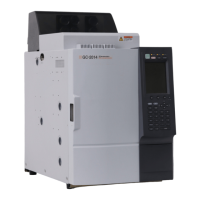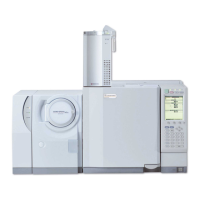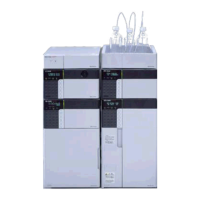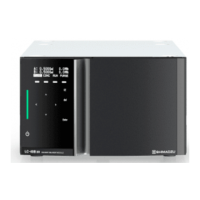10 Starting and Stopping Analysis
10.1 Making an Injecting and Starting an Analysis
110
GC-2014
10.1.2 Making manual injection
Q Aspiration
1. Preparation
・ 10 µL Syringe
・ Sample
・ Rinse solvent
・ Liquid waste container
2. Syringe handling precautions
Fig. 10.1.2 Typical syringe
・ The plunger keeps the sample from becoming contaminated. Do not bend it or touch
it. Keep it clean.
・ Never bend the needle.
3. Solvent pre-wash
Clean the syringe with solvent 3 to 5 times using the following procedure.
(1) Place the syringe into the rinse solvent. Pull the plunger to aspirate approximately 10
µl of Solvent.
(2) Expel the solvent into the liquid waste container.
4. Sample pre-wash
Flush the syringe with sample 3 to 5 times using the following procedure.
(1) Place the syringe into the sample. Pull the plunger to aspirate approsimately 10 µl of
sample.
(2) Expel the sample into the liquid waste container.
5. Preparing to inject
(1) With the needle in the sample vial, pump the plunger to eliminate air bubbles inside
the syringe.
(2) When air bubbles are eliminated, aspirate exactly 1 µl of sample.
(3) Gently wipe the syringe needle with a lint-free wipe.
(4) Aspirate an additional 0.5 µl of air.
Fig. 10.1.3
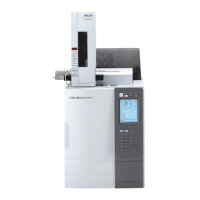
